The initial cost for a concrete driveway will be greater than an asphalt one. However, concrete driveways require less maintenance and last longer. To get a free quote from for a concrete driveway in the greater Indianapolis area from MGA Concrete, call us at (317) 540-7068 or use the contact form at the bottom of our home page.
Concrete Driveway Preparation
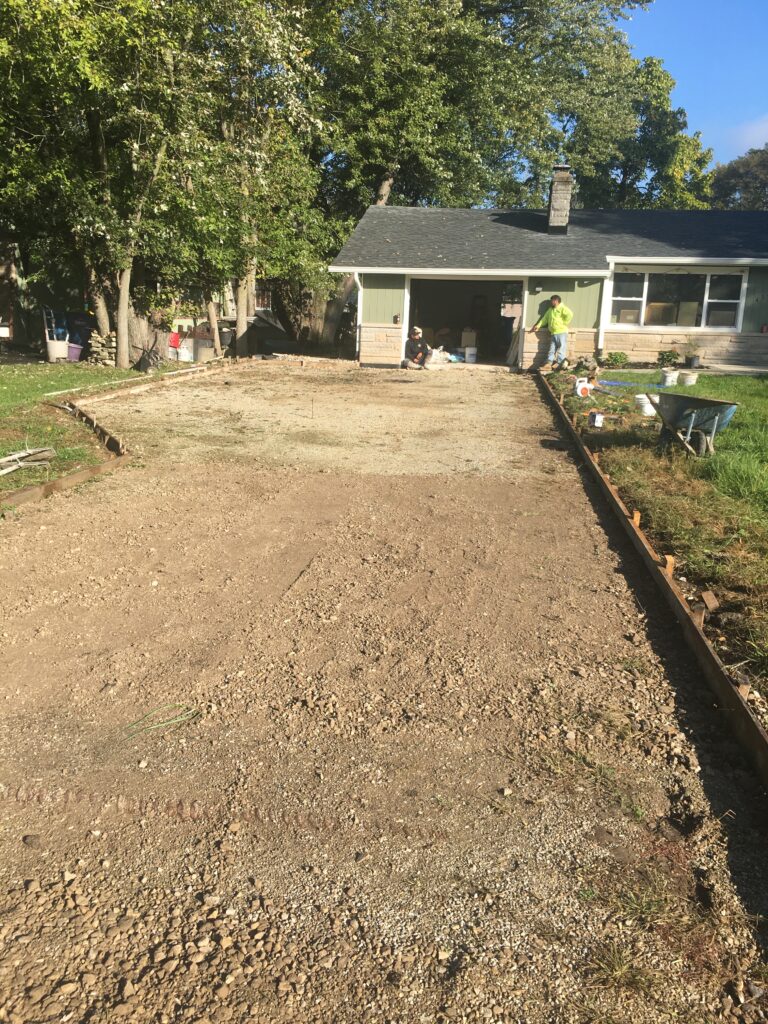

We place wooden boards called frames around the outside of the driveway before pouring the concrete. They are held in place with wooden stakes which we hammer into the ground. Gravel is typically used for the base, normally a depth of four inches. Notice that in this case the driveway will be wider near the garage to provide extra parking.
Driveways for single cars should be nine to twelve feet wide. For two cars they should be twenty to twenty-four feet in width. If your driveway is long, It doesn’t need to be double width for the entire length. It can be double width near the garage and single width near the street.
If the entrance to your garage is on the side, your driveway will need to have a ninety degree turn. The radius of the curve should be at least ten feet.
For parking, allow at least a nine foot by eighteen foot space for each car.
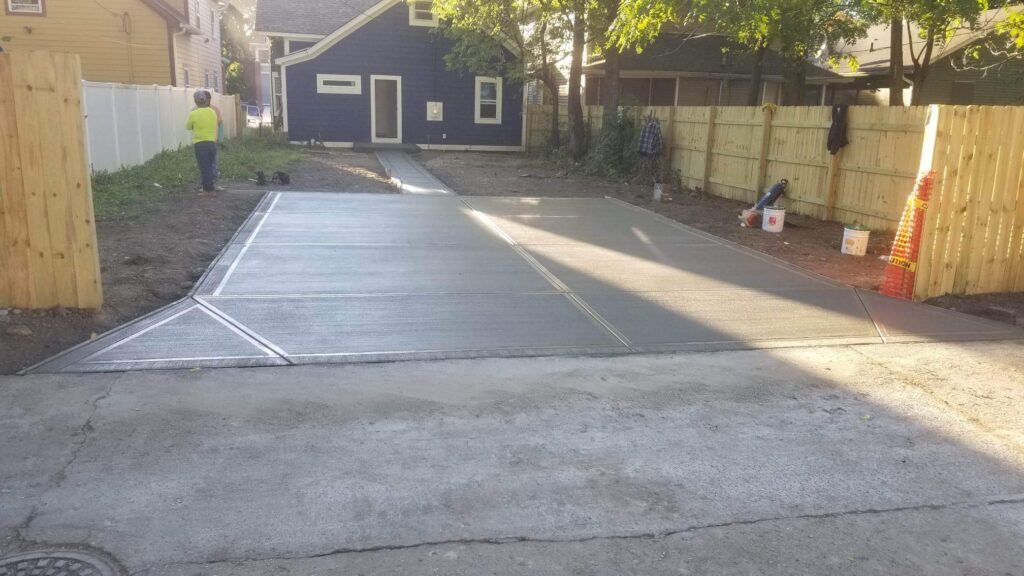

Pouring the Concrete
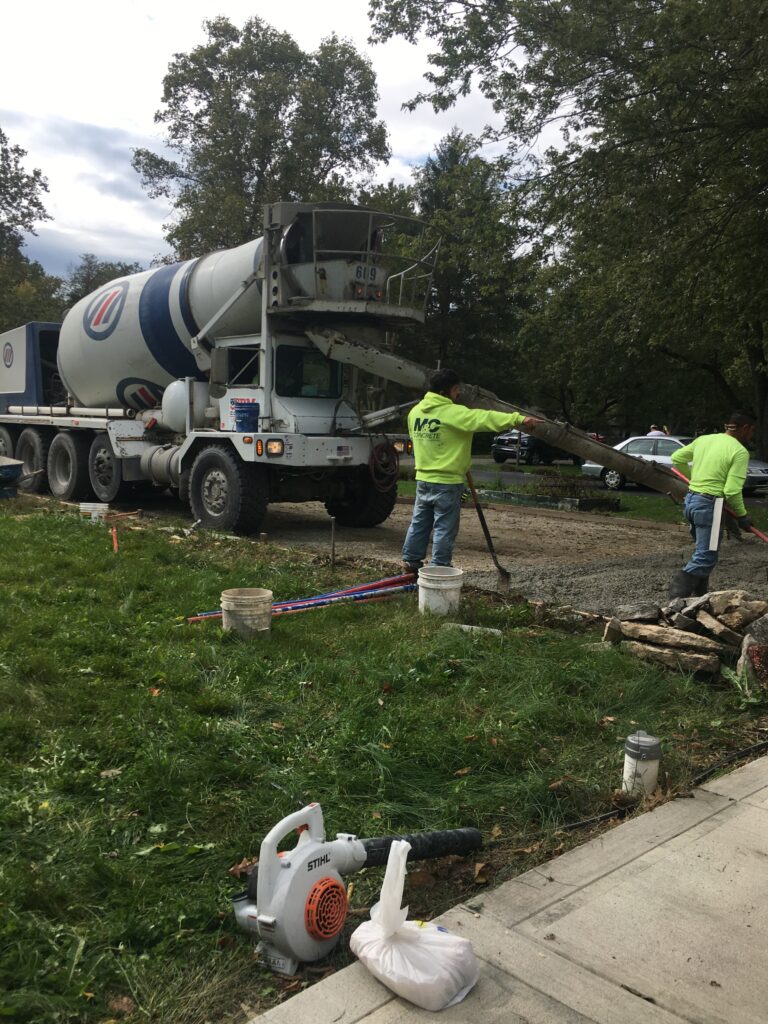

Everything needs to be ready when the concrete truck arrives. We get our concrete from quality suppliers like Shelby Materials or SRM Concrete.. Our crew becomes a bunch of busy bees after the concrete is poured, making sure to get the wet concrete spread out.
For most jobs we use 4,000 psi concrete. It has a ratio of 1 part cement, 2 parts sand and 3 parts stone.
Spreading Out the Concrete
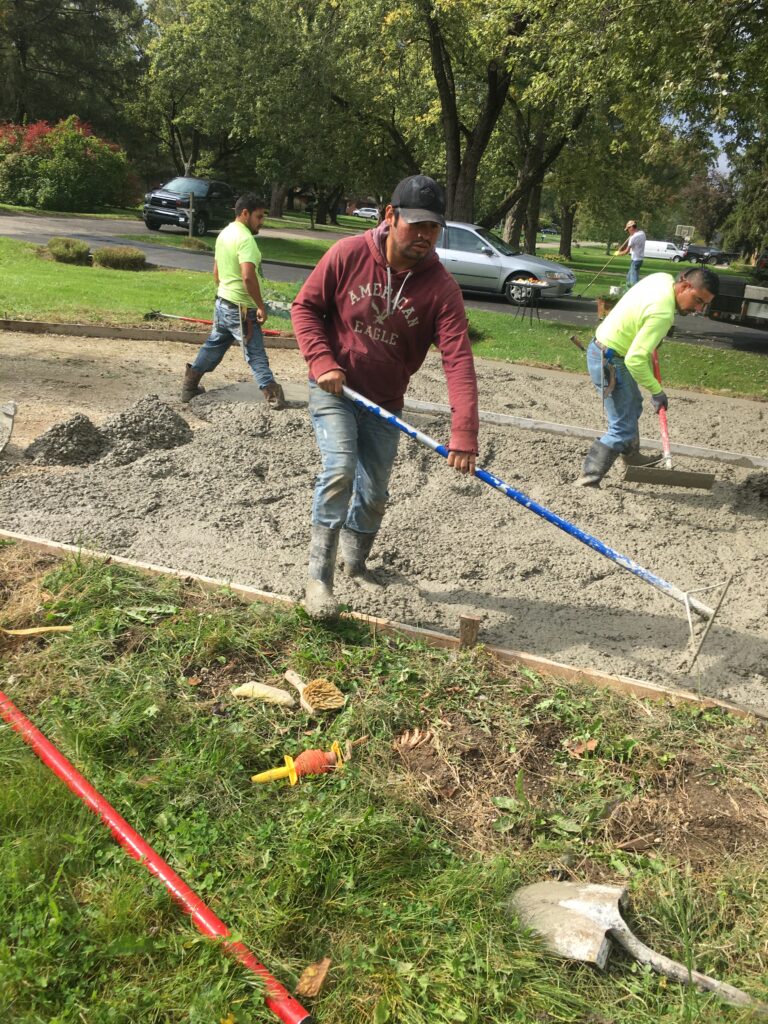

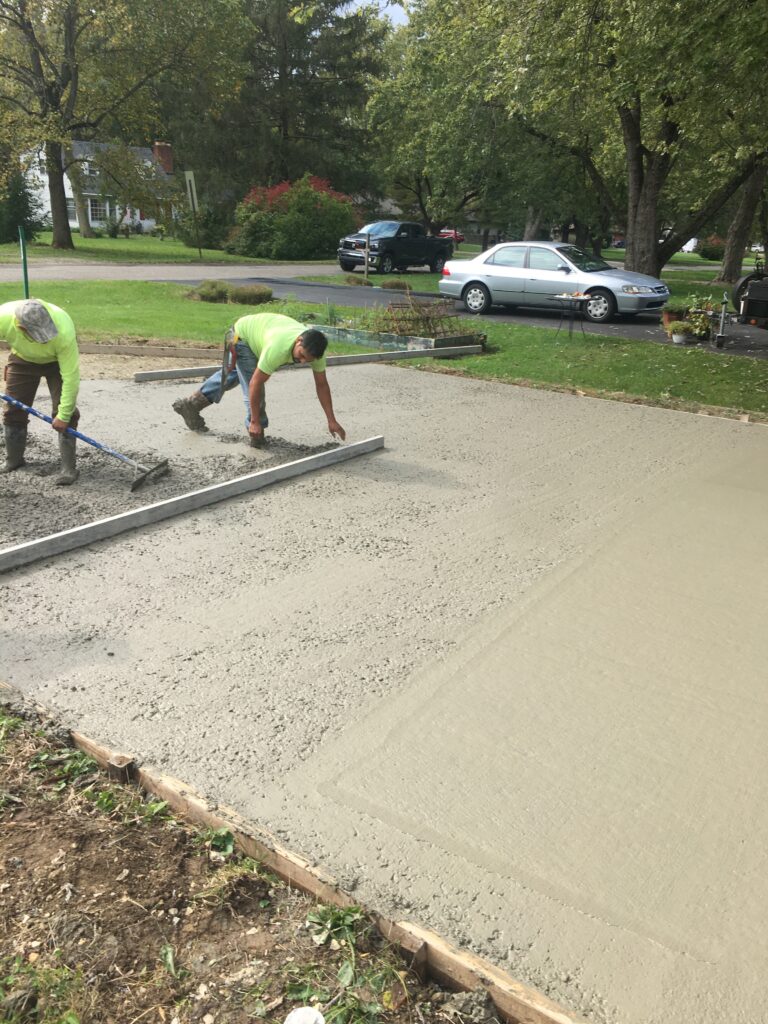

Giving the Driveway a Smooth Finish


Once the concrete had been spread out evenly, it’s time to smooth the surface of the concrete. We smooth the middle of the driveway, with a concrete float. It has a long handle so the user can reach the interior surface without standing in the concrete. They come in a variety of lengths, but the one we normally used has an eighteen foot handle. Along the edges we use concrete trowels for smoothing.
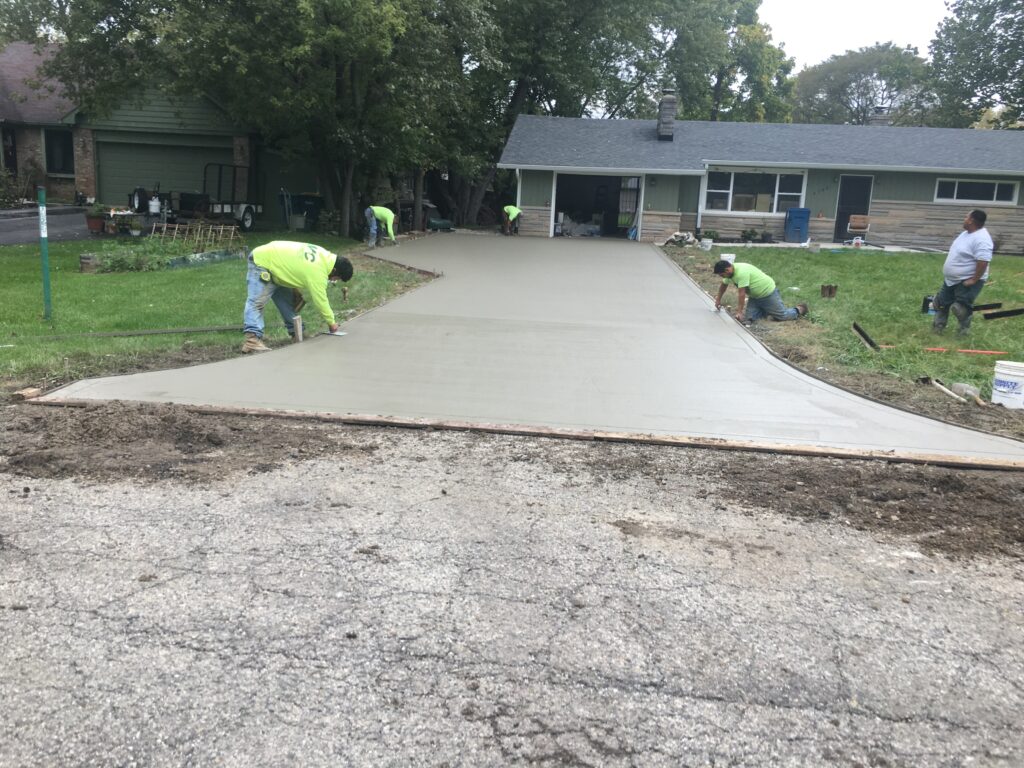

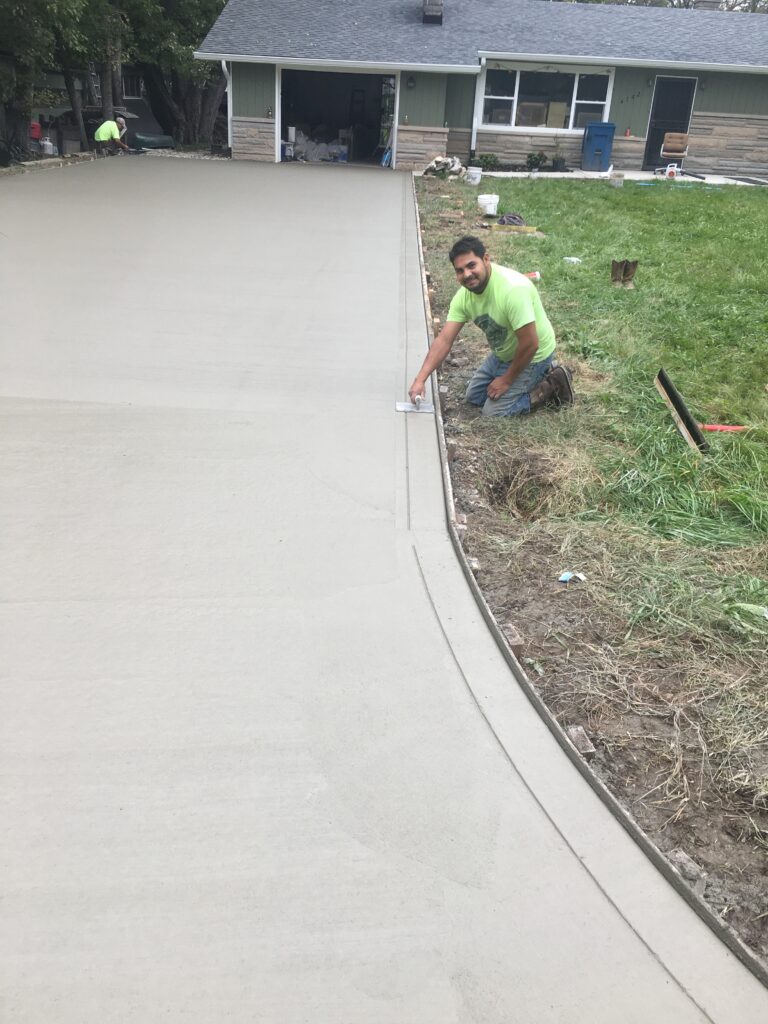

After the Job is Completed
The concrete begins curing due to a chemical reaction called hydration after pouring. During this process, the cement forms bonds with water molecules, which makes the concrete harder and stronger. After twenty-four hours, it should be hard enough to walk on. You should not park or drive on your new concrete driveway for seven days. By that time it should achieve about seventy percent of its final strength. It will continue curing for another month.
